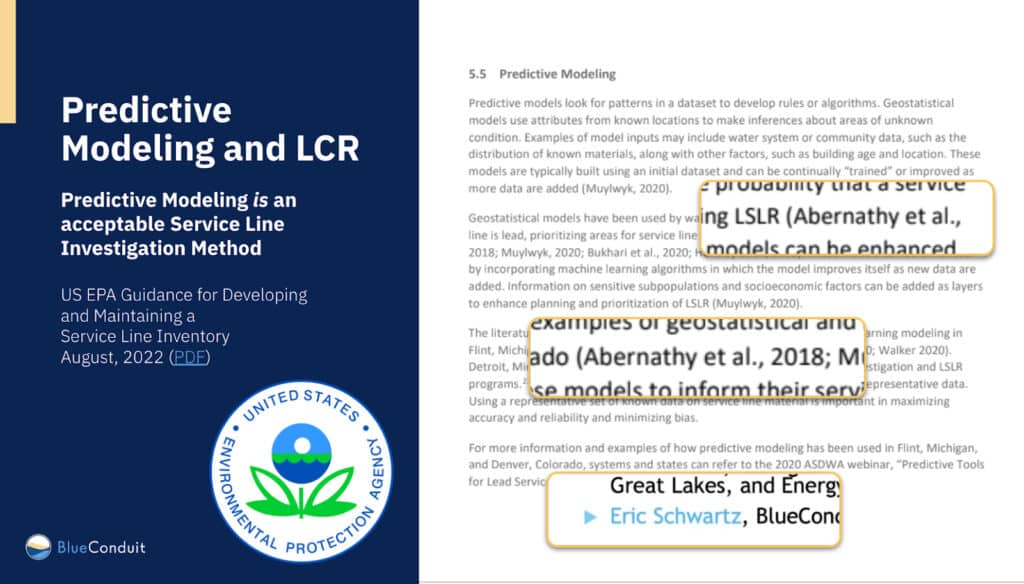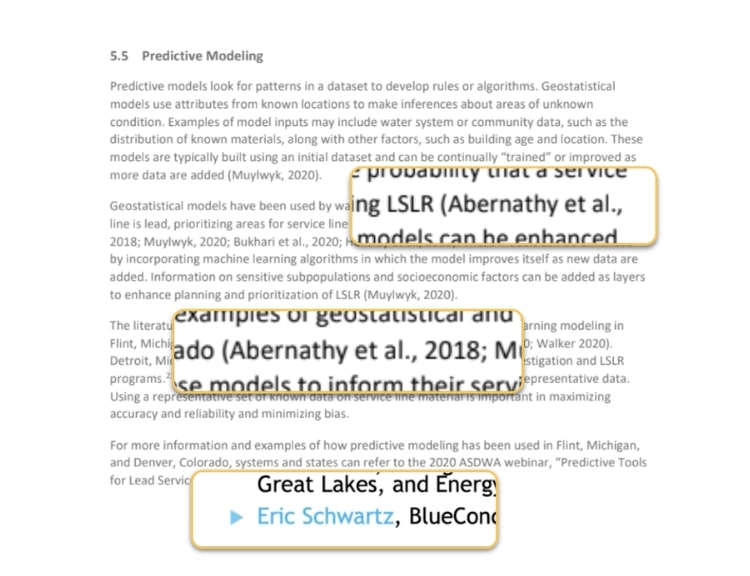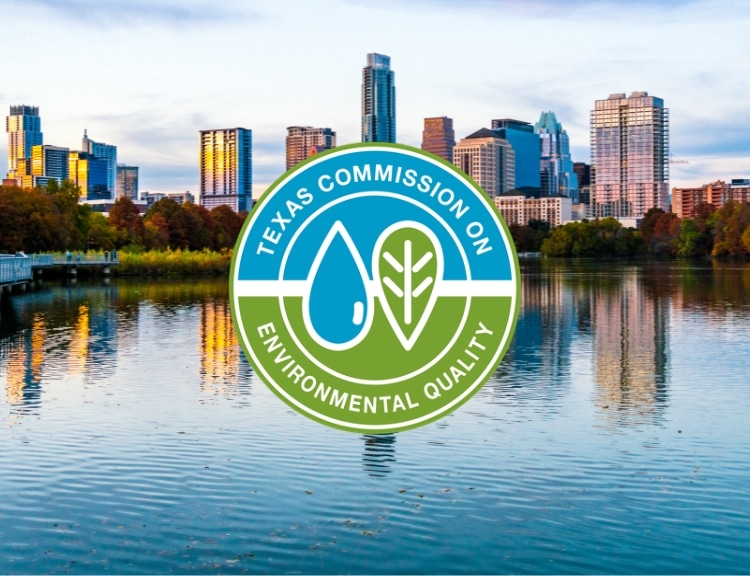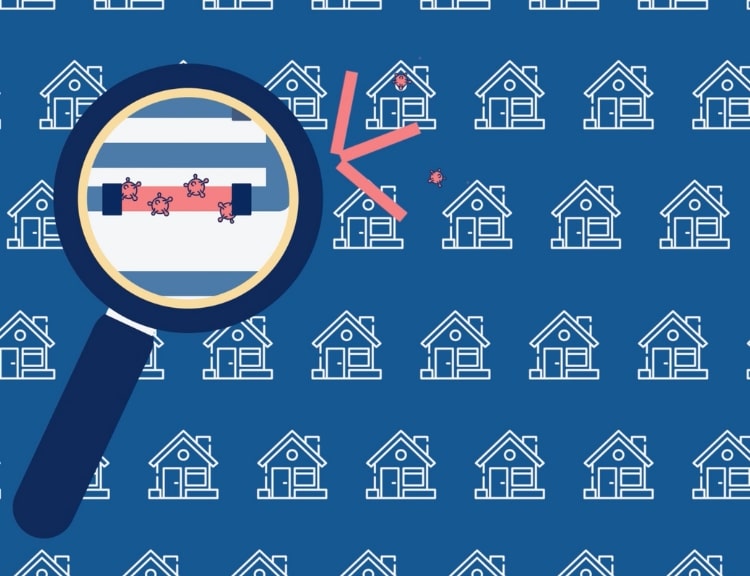BlueConduit recently launched LeadOut Map, the first and only educational tool that provides the most complete picture of the presence of lead pipes in drinking water systems, including predictions of where lead pipes may lie. With the launch of LeadOut, we’re taking a moment to reflect on BlueConduit’s history – how a group of data scientists became experts at, and leaders in, the use of AI and predictive analytics for water system decision making and planning.
When Professors Jacob Abernethy and Eric Schwartz’s UM student research group got involved in Flint MI, their initial focus on water quality quickly shifted to using AI and machine learning to predict the location of lead service lines.
To adequately plan for and fund the lead service line replacements, Flint needed a clear understanding of the service line material for every segment of every service line in the system. At the very least, they needed a good estimate of how many lead pipes they had. Sounds simple, doesn’t it?
While it might sound simple, that information did not exist. And at the time, no one had proposed a systematic way to assess the material of every service line in the water system (outside of digging or physically checking every single one). To this day, most water systems across the country, not just Flint, do not know exactly how much lead they have or where exactly it is located.
Based on the latest analysis underlying the LeadOut Map, there are more than 40 million service lines whose materials have either been reported as unknown or whose materials were not even reported to the EPA.
Creating the first lead service line inventory
The UM research group was the first to aggregate service line material data into a single source-of-truth data set and to use AI-based predictive analytics, guided by representative physical verifications, to fill in gaps and identify likely service line materials for unknown lines.
Based on their work in Flint, Professors Schwartz and Abernethy founded BlueConduit. Within a year of its founding, BlueConduit collaborated with the Association of State Drinking Water Administors (ASDWA) to write this 2020 white paper that outlines best practices for data management related to service line material identification. The white paper, along with the technical research papers published by the BlueConduit co-founders and their research teams 2018 and 2017, served as the basis for some key features in the regulatory change to come.
Codification of best practices in the LCRR
In the EPA’s 2021 Lead and Copper Rule Revisions (LCRR), the guidance outlined for service line materials inventories recognizes the data management process outlined in the white paper by BlueConduit and ASDWA.
The EPA guidance cites, among other sources, Professors Abernethy and Schwartz’s academic work in guidance and recommendations for how water systems should go about completing this work, particularly for the use of statistical methods as a means of service line material identification.

Figure 1. BlueConduit team members cited in EPA LCR guidance





